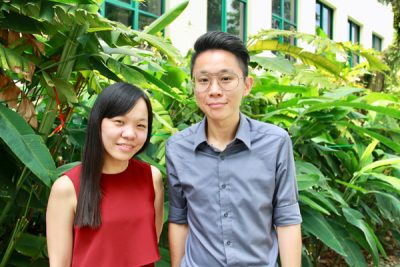Why Singapore’s English Teachers Should Embrace Singlish, Not Fight It
Is it time for Singaporean educators to embrace Singlish as a legitimate learning tool? What the Research […]
Read More
With an average of 40 students to one teacher in a class, it can be difficult for teachers to engage every student. We speak to two Science educators from Pioneer Primary School who sought to address this by incorporating team-based learning (TBL) into their lessons, giving students a platform to verbalize their knowledge and learn through collaboration.
Giving students a voice and avenue where they are able to articulate their knowledge and exchange ideas can empower them to become active participants in the learning process. However, as teacher-directed instruction remains the primary form of instruction in class, it can be difficult to carve out space for every student to speak up.
“The teacher is often the one dictating the lesson, and is not able to maximize interaction among the students. The students are passive listeners,” says Mr Chiam Kim Yeow, Level Head of Science at Pioneer Primary School.
Conventionally teacher-directed activities such as the reviewing of answers after a test limits the chances for students to ask questions and construct their own explanations.
“After covering the syllabus, we need students to be versatile enough to apply their knowledge in context,” says Kim Yeow. To be able to do this, students need to become more than just mere receptors of information.

Liyun (left) and Kim Yeow hope to create an engaging classroom through the use of team-based learning approach.
To create more opportunities for student participation in class, Pioneer Primary School has introduced a team-based learning approach to reviewing answers in three of its Primary 6 classes for the past 3 years.
In class, students attempt 30 multiple-choice questions in a standard science paper in collaborative teams of four. They take turns to share their responses, negotiate, and convince their peers of their answers using the Claim-Evidence-Reasoning framework. As a group, students then verify the agreed response using a formulated programme on a laptop provided.
“When students are interacting in a group and sharing answers, they have to argue among themselves and make sure everyone agrees on the final answer,” says Kim Yeow.
In order to persuade others, a student must not only understand the concepts, but also be able to articulate what they know.
“There are some students who might take for granted that they know the answers, but may be unable to verbalize them. As a result, students’ performance in Booklet B of the science paper could be affected as they are required to answer open ended questions,” he says.
With TBL, teachers can ensure that students have the chance to air their views and receive prompt feedback to clear their misconceptions.
“It seems that when students speak amongst themselves using their own vocabulary, they are able to reason it better,” says Ms Wong Liyun, Assistant Year Head of Middle Primary in Pioneer Primary School. “For them to actualize their own explanations in their own words and teach their friends who might not have understood only reinforces everyone’s learning. Hopefully we can scaffold discussions further to help students provide better reasoning in a more scientific way.”
In this student-centric approach, teachers switch from being the sages on stage to facilitators who walk around addressing problems in individual groups while the rest of the class is engaged in discussion.
As the quality of student discussion during TBL affects its usefulness, one challenge the teachers faced was grouping students for effective learning.
“We have to be very deliberate, and it works best to have students of mixed progress in the group to facilitate the transference of learning’,” says Liyun.
When grouped appropriately, TBL reduces students’ dependency on teachers when reviewing answers. Students are able to actively contribute when they collaborate with others and sharpen their communication skills by modelling teacher talk. Lower progress students also benefit, as they are able to learn from their peers who explain their answers to them.
Group dynamics, or the quality of student interaction, is another area of concern.
“Sometimes, we cannot be sure that students did not just decide on an answer by following the majority. It is also challenging to ensure that students discuss every question in the paper,” shares Liyun. “This is something the school intends to work on in the future.”
“We have to be very deliberate (in grouping students together), and it works best to have students of mixed progress in the group to facilitate the transference of learning.”
– Wong Liyun, Pioneer Primary School
Nevertheless, student responses to TBL have been encouraging thus far. Students gave feedback that they understood their classmates’ explanations and were able to share their views during the session, showing they were meaningfully engaged.
Analysis of their grades also reveals that compared to other classes where a teacher-centric approach was used, students who were involved in TBL learnt as much academic content as their peers. Significantly, these students were also observed to be more vocal, engaged in perspective-taking, and capable of working cooperatively during team discussions.
The teachers at Pioneer Primary School believe that the chance to speak up empowers their students to take greater ownership of their learning.
“The empowerment is there when you give them the authority to speak up. Imagine forty students speaking at the same time, fully engaged in either teaching or learning. Everyone can be an expert so long as they are able to substantiate their claim. That is the essence of science, which is what we were lacking in class,” says Kim Yeow.
Liyun agrees, adding, “We found through this project that preparing students for exams and developing 21st Century Competencies need not be a dichotomy. Moving forward, we can incorporate student-centric pedagogy into the classroom to really help students develop these competencies without compromising on their learning.”